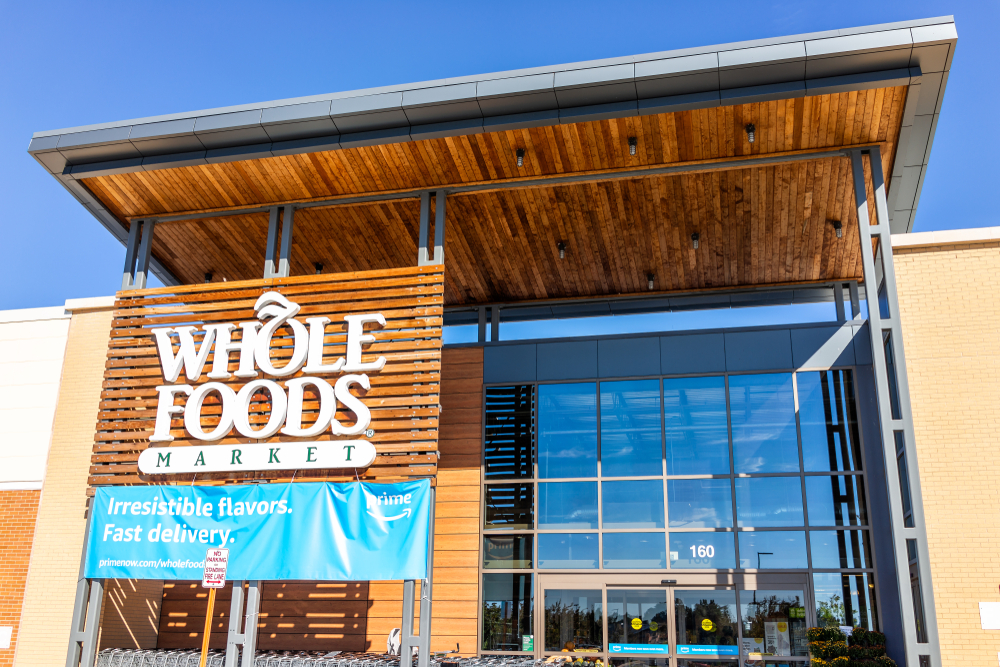Will Amazon Ever Dominate the Food Business?
Six years ago, Amazon shook the retail world with its audacious $13.7 billion acquisition of Whole Foods Market. It was a move that promised to revolutionize the way we think about grocery shopping, merging Amazon’s technological prowess with Whole Foods’ brick-and-mortar presence. At the time, there was widespread anticipation of a seismic shift in the grocery landscape. However, that promise has faded into the background today, leaving us with a burning question: can Amazon truly dominate the food business?

Great Expectations, Unmet Results
The aftermath of Amazon’s acquisition of Whole Foods saw billions of dollars in market value evaporate from competitors like Walmart and Target. Yet, despite the initial shockwaves, the transformation of the U.S. retail landscape that many had anticipated has failed to materialize. Whole Foods, once seen as the flagship of Amazon’s physical retail ambitions, has now blended into the tapestry of Amazon’s sprawling empire, alongside its cloud servers and lightning-fast shipping.
Despite Whole Foods’ integration, Amazon seems stuck in grocery limbo, needing a cohesive strategy for its physical stores and grappling with unsuccessful ventures such as Amazon Fresh and Amazon Go. Recent store closures are a stark reminder of Amazon’s ongoing struggle in this sector, signaling that the e-commerce giant has not become a severe contender in physical grocery sales.
The Vital Importance of Physical Presence
Amazon’s CEO, Andy Jassy, asserts that physical grocery stores are still a top priority, emphasizing their necessity to capture a significant share of the perishables market. However, Amazon’s journey to find a resonant and economically viable format for these stores has been marked by continuous experimentation. Striking the right balance between differentiation and cost-effectiveness is crucial, but the outlook seems dim with the company’s recent focus on cost-cutting measures and store closures.
Navigating the Conundrum: Scale and Strategy
To compete with retail giants like Walmart and Kroger, Amazon must rapidly scale up through acquisitions or store developments. However, the company’s cautious approach and recent emphasis on cash preservation present a significant hurdle to aggressive expansion in the physical grocery sector.
Amazon’s reluctance to take bolder steps is perplexing, considering its substantial financial arsenal, which amounted to approximately $42.3 billion in cash at the end of 2021. Nonetheless, Amazon’s physical store sales in the same year were a mere $17.5 billion, representing just about 2% of the massive $818.6 billion U.S. supermarket and grocery market.
Leveraging Brand Synergy
Former Amazon strategist Brittain Ladd pointed out the disconnect between Whole Foods and Amazon Prime customers and proposed the integration of Amazon Fresh with Whole Foods to leverage the brand’s reputation and align customer preferences. However, the lack of significant integration post-acquisition indicates a missed opportunity for scaling and capturing market share.
Ladd also attributed Amazon’s inertia to the continued leadership of Whole Foods’ founder and CEO, John Mackey, who resisted substantial changes. The failure to enact meaningful changes and integrate strategically suggests that Amazon’s journey in the grocery sector has been a series of missteps and unrealized opportunities.
Amazon’s Technological Pursuits and Consumer Preferences
Amazon Go, the tech-infused format that promised a fully automated shopping experience, underscored Amazon’s fascination with technology. However, it highlighted a crucial lesson: technology alone cannot suffice. Consumer preferences are still leaning towards human interaction in the retail experience, a choice that even tech giants cannot ignore. The lasting impact of the global pandemic has also reshaped shopping behaviors, revealing vulnerabilities in a purely tech-driven approach.
In Conclusion: Stuck in Grocery Limbo
Amazon’s ambition to build a dominant grocery store chain appears to be stuck in a never-ending limbo. Its hesitancy to strategically integrate and expand existing acquisitions and failure to align with consumer preferences and needs are significant roadblocks. While Amazon boasts substantial financial resources and a wide array of technological tools, achieving its grocery ambitions hinges on a customer-centric strategy and aggressive scaling. The path to dominance in the food business is steep, filled with market-specific challenges and consumer expectations that demand more than a technological facelift. This leaves us with the pertinent question: Is Amazon indeed poised to revolutionize the grocery sector, or will it remain a giant experimenting with formats, forever caught in the realm of what might have been?






